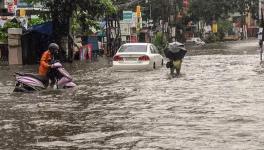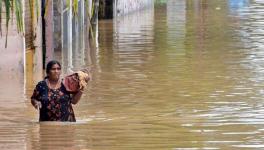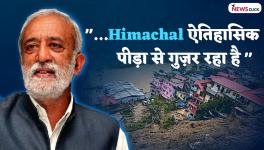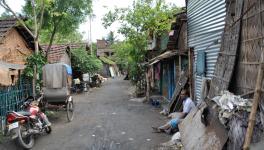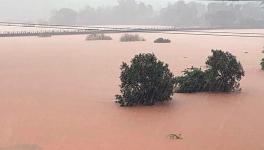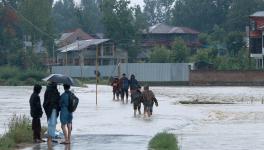River Beautification Project Could Heighten Flood Risk, Worry Pune Residents
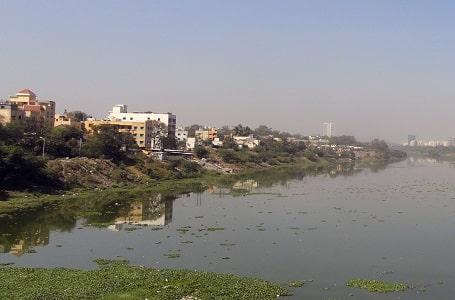
Image Courtesy: https://pmc.gov.in/en/riverfront
“If my mother were really old and quite sick, should I take her to the doctor or to a beauty parlour?,” this was a rhetorical question posed by a concerned citizen in a Zoom meeting on May 2, 2021, to discuss the Pune River Rejuvenation Project, estimated in 2018 to cost Rs 2,619 crore. This would cover 44 km of the Mula-Mutha river system that flows through the city limits. These are rivers that flow into the Bhima River, which in turn is a tributary of the Krishna. The meeting was held by NGO Sajag Nagarik Manch, which works for civic education in Pune.
In 2015, soon after Devendra Fadnavis of the Bharatiya Janata Party took over as Chief Minister of Maharashtra, a consultant was assigned the task of planning this project and submitting a report, at a cost of Rs 3.96 crore. HCP Design, the Ahmedabad-based architecture firm, that serves as the consultant for this project also drew up the plan for PM Narendra Modi’s pet Central Vista project in New Delhi. Construction of the Sabarmati Riverfront Project in Ahmedabad in 2005 was also undertaken by this firm when Modi was CM of Gujarat.
The website of the Pune Municipal Corporation mentions that work on the riverfront project is already underway. “This project will prevent the environmental degradation of Pune’s Rivers, protect them from being choked by development, reduce the threat of flooding, create a public realm along the river and provide Pune with a vital riverfront that enriches life in the city,” the PMC website states.
On May 2, 2021, as several concerned people from the city gathered to take stock of the project, one person demanded to know who this project was being constructed for. Environment officer Mangesh Dighe of the Pune Muncipal Corporation explained that it had been planned for several years, and funding would be sought through a Special Purpose Vehicle. Since construction is expected to last about a decade and cannot be finished in a jiffy, allocation will also be made from the budget of the municipal corporation.
Also read: Hyderabad Floods: How a ‘Global Vision’ for India’s Cities Has Compromised Liveability
Dighe mentioned that the project consultants had surveyed over 4,000 people whose opinions were sought as part of the planning process – none of the over 200 people attending the meeting over Zoom, though, had been part of the planning process, and questions were raised about the nature of that public consultation.
In 2016, Government of India and PMC signed a nearly Rs 1,000 crore loan agreement with Japan International Cooperation Agency (JICA) to mitigate the pollution in Mula-Mutha rivers, through construction of 11 new sewage treatment plants, with 85 % funds to come from the Centre. The loan has been received at an interest rate of 0.30%, and the project was set to be completed by 2022. This, too, was mentioned as part of the river rejuvenation plan, although some citizens wondered where space would be found for so many new sewage treatment plants.
Rohit Prajapati, joining the online meeting from Gujarat, pointed out that the Supreme Court, in an order in February 2017, had sought that all industrial units releasing effluents must have functional sewage treatment plants in three months’ time. After that, their license to function should be withdrawn if they were found polluting water bodies. This order was also applicable to domestic sewage pollution in all municipal and gram panchayat areas, as also cantonment boards.
Businesswoman and social worker Anu Aga asked if the Rs 2,619 crore that was set to be spent on this project might not be better spent providing hospitals and adequate oxygen during the pandemic. Architect Sarang Yadwadkar pointed out that although this was a river rejuvenation project, nearly 78% of the allocation of funds was on civil works – the extensive construction would hardly serve to rejuvenate the river. He also pointed to how much planning still remains – there is a move to raise the height of bridges across the river in the city limits – but if the height of connecting roads, too, is not elevated, buses would scarcely be able to continue to use these bridges.
Also read: Pune Metro: Pillars in River Heighten Flood Risk, Will They Be Reconsidered?
Reading out from the project proposal, Yadwadkar pointed out that there were plans to use the land in the floodplains as a revenue source, which was blatant disregard for environmental norms – the environment officer of the PMC, however, in his presentation, had claimed that the project would not be a commercial one. Yadwadkar pointed out that the Detailed Project Report submitted by the consultants also offers the suggestion that government-owned land adjoining the river could be monetised.
There are private lands to be acquired as part of this project. The cost of this acquisition had not yet been factored into the total project cost. Yadwadkar said the saucer-like shape of the city, and the fact that five rivers flow into Pune and merge to leave as one, meant the city was prone to floods. The monsoon of 2019 saw nearly 25 deaths in the city on account of flash floods.
Yadwadkar raised the question that if the report on changing rain patterns in this region, presented to the state government by TERI in 2014 – which had projected 37.5% rise in annual rainfall and increased frequency of cloudbursts as the period of rainfall showed a trend towards lesser days of more intense rain – had been considered in the planning process. The environment officer admitted that this report had not been considered. Also, embankments planned were higher than the ground level adjoining it, indicating heightened possibility of pluvial flooding.
There were questions raised about whether the planners of the project had considered the nearly 30 different streams that feed into the river from different parts of the city; whether groundwater use and sewage generated from it was at all part of the consideration. One woman raised the issue of the biodiversity near the river banks, and expressed concern that flattening the rocky outgrowths to create the sloped embankments along the river might affect the fish and bird species that use these.
The environment officer attempted to answer the barrage of questions, and said he would need to consult with the group of which he is a part to answer several of these questions. He also requested the people of Pune to consolidate all their questions and send it to him, so that he could provide written answers.
Also read: Inland Waterways: Environment and Coastal Livelihoods Sidelined for Modi Government’s Pet Project
It may be pertinent to mention that the Sabarmati Riverfront Project, also planned by the same consultants, has faced several legal hurdles. Prominent social activist and lawyer Girish Patel argued in court that the project would disrupt livelihoods; in March 2005, the Gujarat High Court stayed all evictions for the Sabarmati project. The Sabarmati was also a seasonal river, retaining water only in the months after the monsoon – to make the riverfront project a real river project, water had to be diverted from the Narmada Main Canal.
Over Rs 1,500 crore has already been spent on the Sabarmati Riverfront project. The Rs 7,474 crore Ahmedabad Municipal Corporation Budget of 2021-22 sets aside over 17% of the total budget for drainage. Since it was constructed, the riverfront has been flooded in the monsoon several times. Yet, Bimal Patel, the architect who designed it, says the design has taken care of the floods too. “It has been designed in such a way that there is minimal damage, only cleaning cost is involved,” he explained, after the floods of 2017 when snakes from the river wiggled into factories in Behrampura, on the banks of the Sabarmati in Ahmedabad.
Concern over whether large sums of money would be committed to a project that would only exacerbate flooding was evident in the Pune citizens’ Zoom meet. Another concern is given the massive construction works proposed, is this project more about real estate than the river? “Pune Municipal Corporation should explain what the property tax it collects is spent on,” one participant said.
(The author is a freelance journalist based in Pune.)
Get the latest reports & analysis with people's perspective on Protests, movements & deep analytical videos, discussions of the current affairs in your Telegram app. Subscribe to NewsClick's Telegram channel & get Real-Time updates on stories, as they get published on our website.










